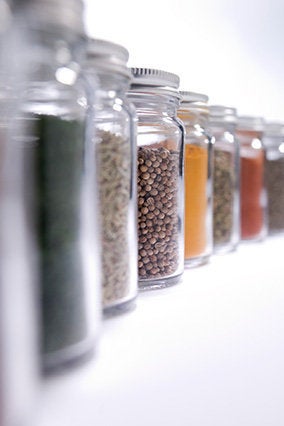
By Lynn Andriani
Find out which are the worst (and best) days for deals, where you'll find the priciest (and cheapest) items shelved and who you should never bring with you.
1. Trying To Avoid Crowds
Anyone who's spent time catching up on their celebrity-gossip magazine reading while slowly making their way toward the register knows that Fridays, Saturdays and Sundays are the busiest days to shop. But while switching your weekly grocery run to a Monday, Tuesday, Wednesday or Thursday may save you a little bit of time, it probably won't save you money. Retailers know that most people shop on weekends, so that's when they offer their best deals, says Roger Davidson, who has held senior positions with major grocery chains such as Supervalu, Wild Oats Markets and Walmart. Stores often start their sales on a Thursday and run them through a Sunday, which is the busiest day. Another reason to head to the store on days when it's crowded: Research shows we're less likely to buy unnecessary items when we're surrounded by many people. If you really love having wide-open aisles but still want to benefit from markdowns, try Thursday or Friday mornings.
2. Not Realizing You're Low On Detergent
When Kasey Trenum, a money expert at Savings.com and cofounder of the online, money-saving course Time2SaveWorkshops.com, first started trying to cut her household spending, she looked at where most of her money was going -- and it turned out that items she bought every few weeks, like detergent and diapers, were her biggest expenses. So Trenum began looking for coupons and buying those products when they were on sale or she had a coupon (or both) -- not just when she was running low. She's been doing this for years, and just a few weeks ago used coupons to score six bottles of detergent, four containers of fabric softener and two packages of dryer sheets for less than $8 total.
3. Avoiding Products Shelved At Eye Level
We've been trained to look high and low (literally) for the best deals, but sometimes the least expensive items are right in front of us, says Davidson. Do a quick scan up and down before you put that can of green beans in your basket, he advises, since many retailers are starting to place items with value prices at eye level -- especially cheaper store brands (which, Davidson reminds us, are usually the same quality as national brands, since many of the companies that make them also make store brands).
4. Enlisting Your Partner To Help
We knew shopping with kids isn't recommended if you want to spend less ("But Mom, I neeeeed these cocoa-fruity-yogurt-cereal-cupcake bars!"), but we didn't realize that bringing a man along also meant we'd likely wind up with a bunch of things we didn't set out to buy. Davidson has done research that has shown men are less strategic when shopping and tend to throw more impulse buys into their baskets. (Additionally, this eye-opening article reveals that 60 percent of purchases are unplanned -- regardless of the shopper's gender.) If you do have to bring your kids, give them a job -- Saving.com's Trenum lets them push the shopping cart -- to distract them.
5. Going To Dollar Stores Just For Extras
Trinkets and small gifts (e.g., floral nail files, colorful pens, 20-packs of hair elastics) aren't the only things worth buying at dollar stores. These retailers can be gold mines for canned and bottled foods -- think pickles, olives, salsa. And while we're on the subject of non-traditional places to buy groceries, avoid stocking up on food at drugstores, says Davidson. They tend to price everything from chips to pasta higher than supermarkets do.
6. Falling For Half-Aisles
Experts who lay out grocery stores know that a long aisle with no escape route can be off-putting (Davidson says a lot of people will look down it and think, "I don't need anything there," -- even though they very well might). So designers are starting to put cross aisles in (they're like cross streets, running perpendicular to main aisles), since their research shows there's a greater likelihood a shopper will be drawn to them, thinking there's an easy way out if she doesn't find what she's looking for. That isn't to say short aisles have expensive items and long aisles have cheaper ones -- but it is a reminder that we can easily get seduced into making an impulse buy in a short aisle, so remember to stick to the script. Get what's on your list, and don't pay attention to an aisle's length.
Related On HuffPost:
